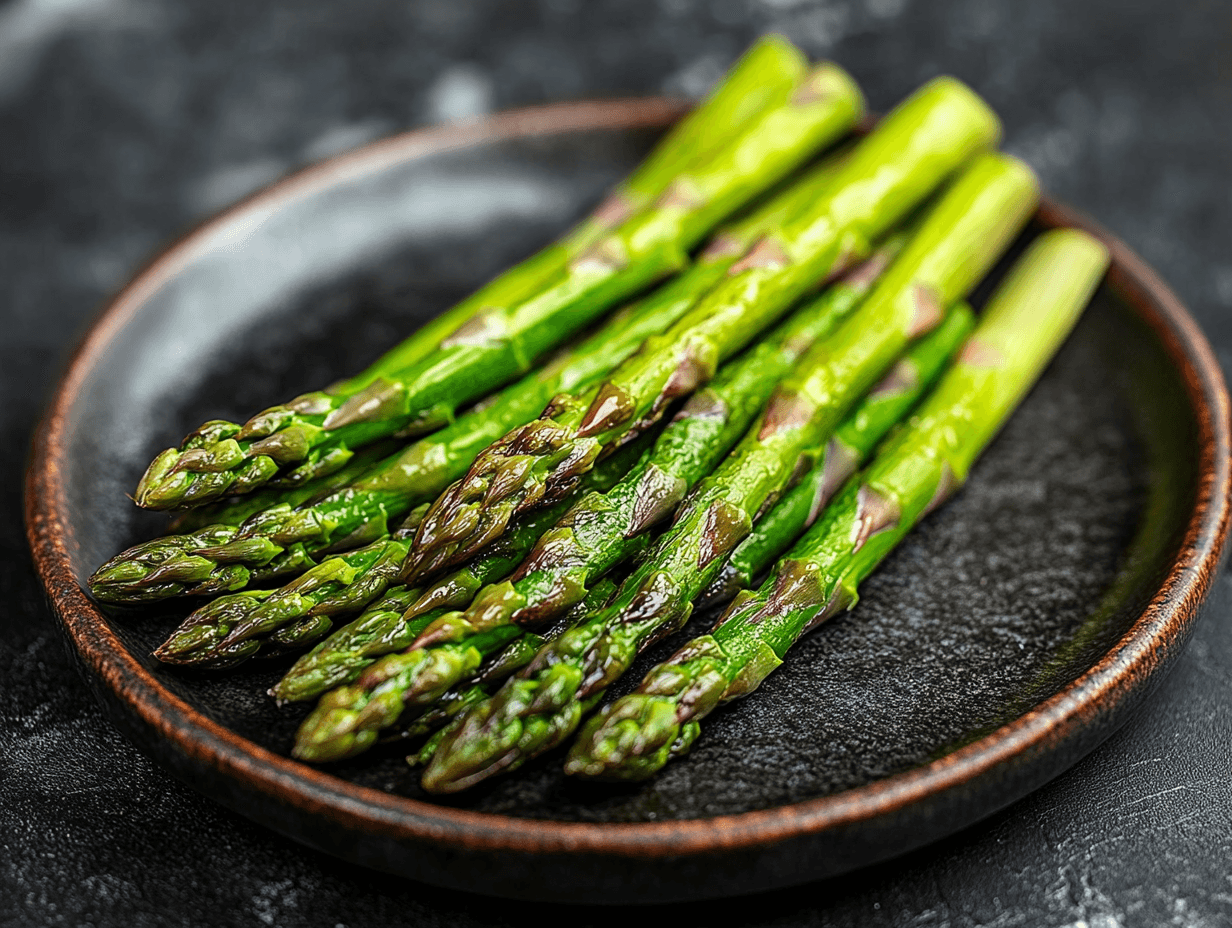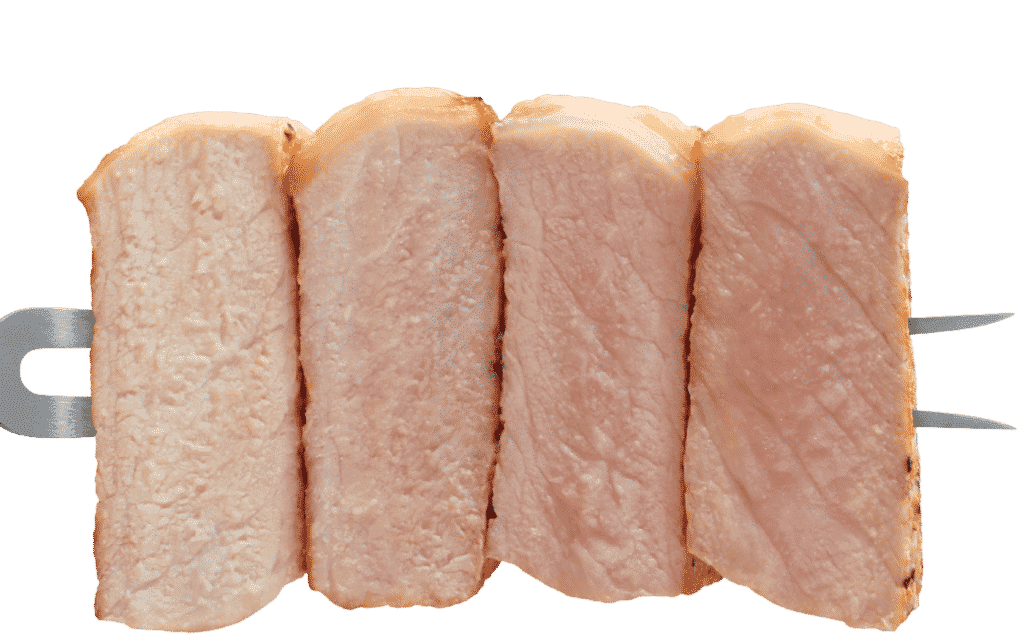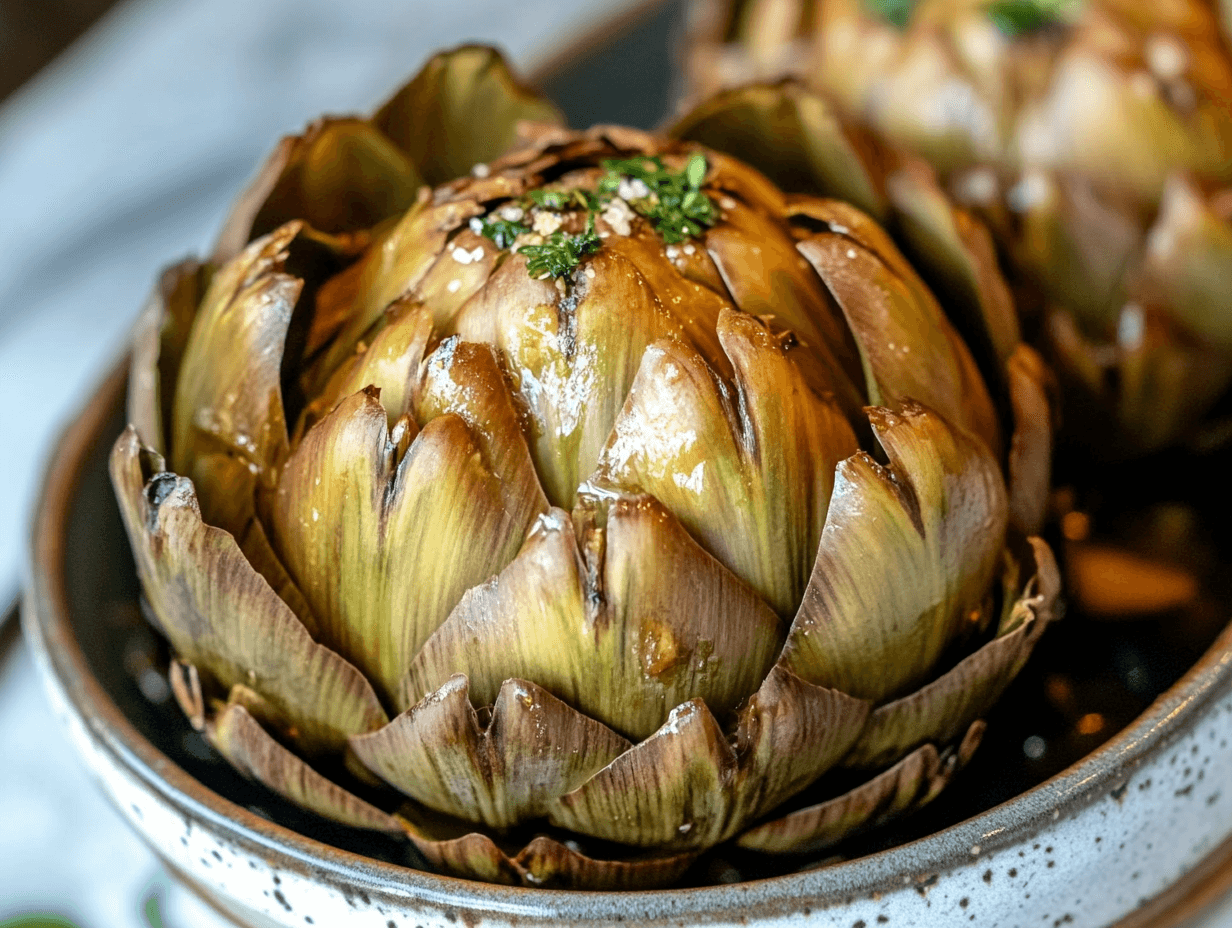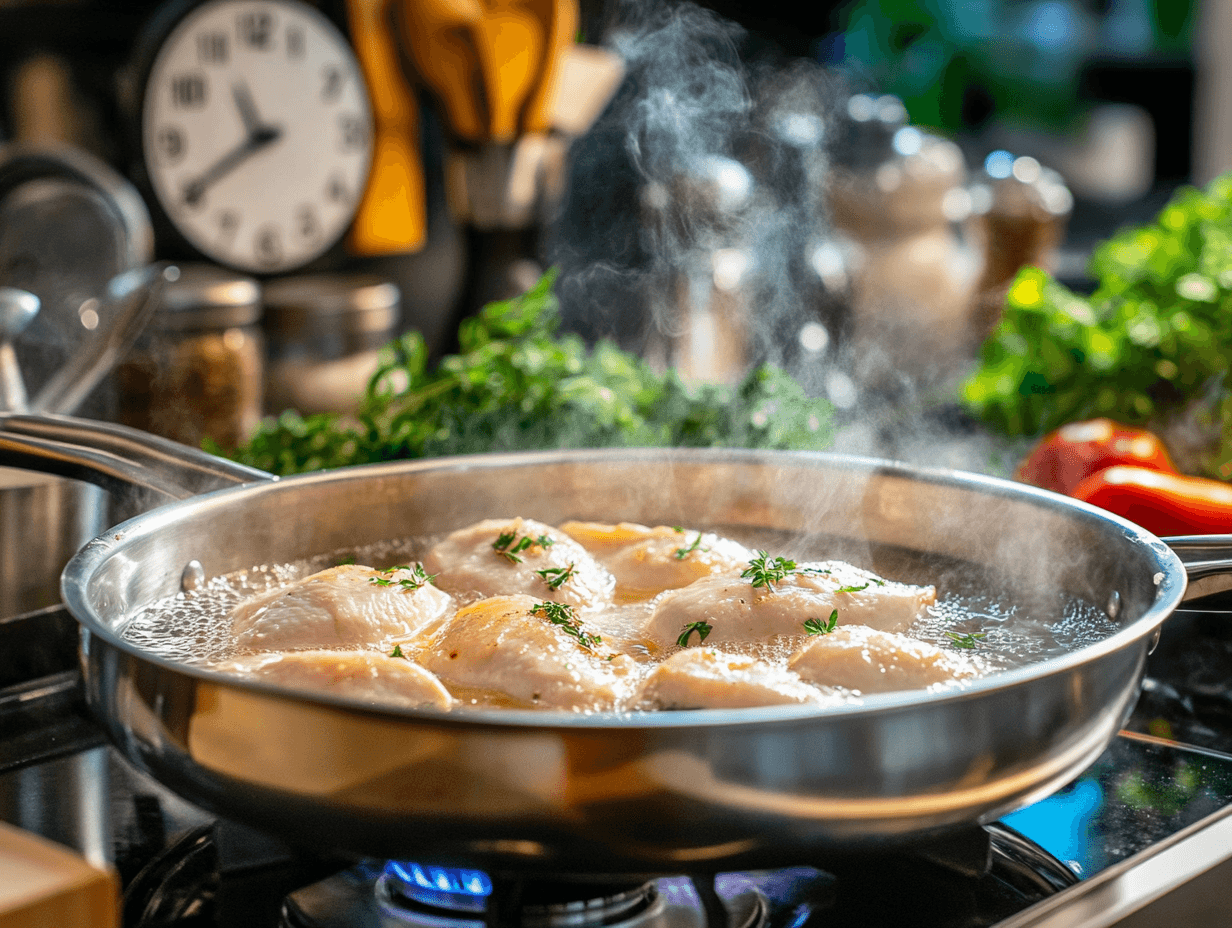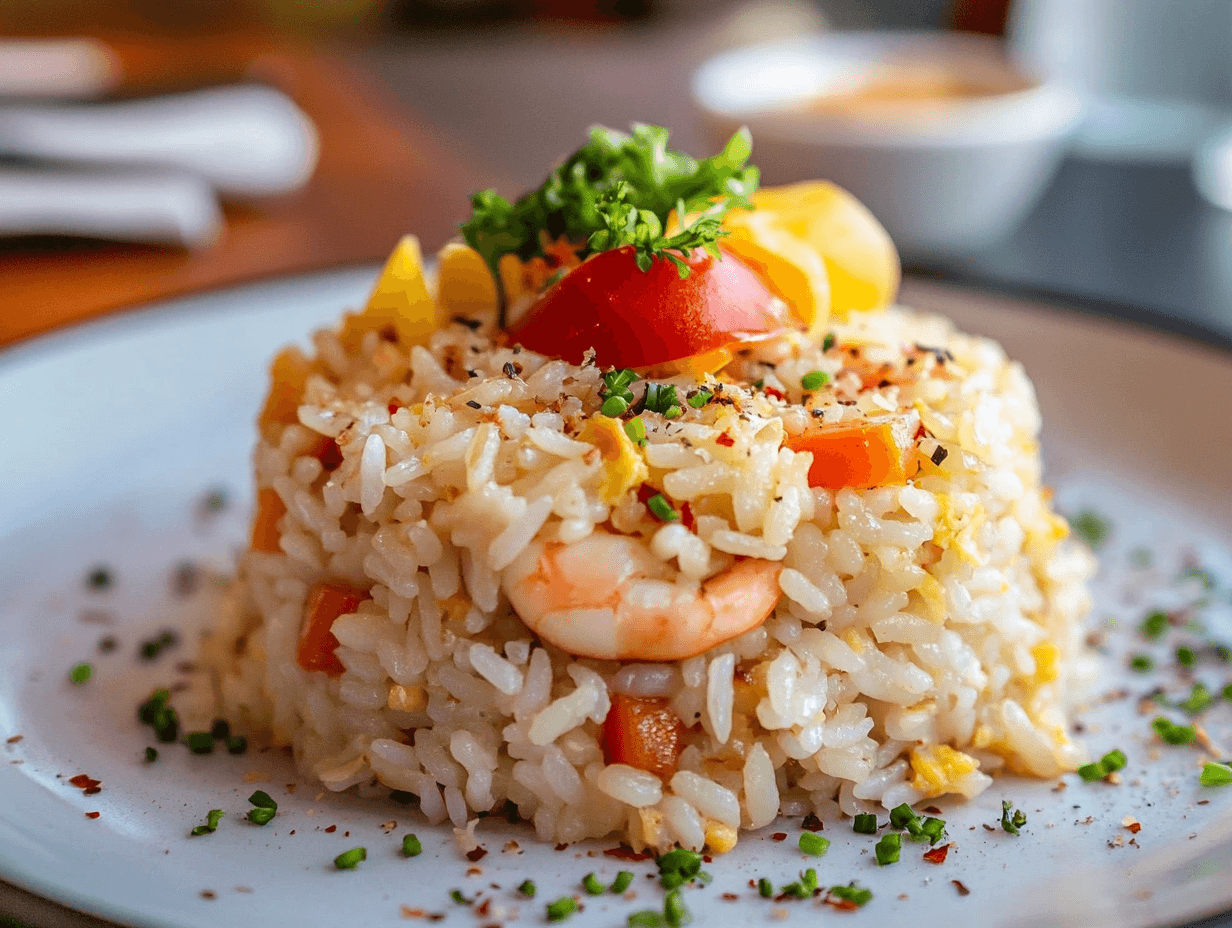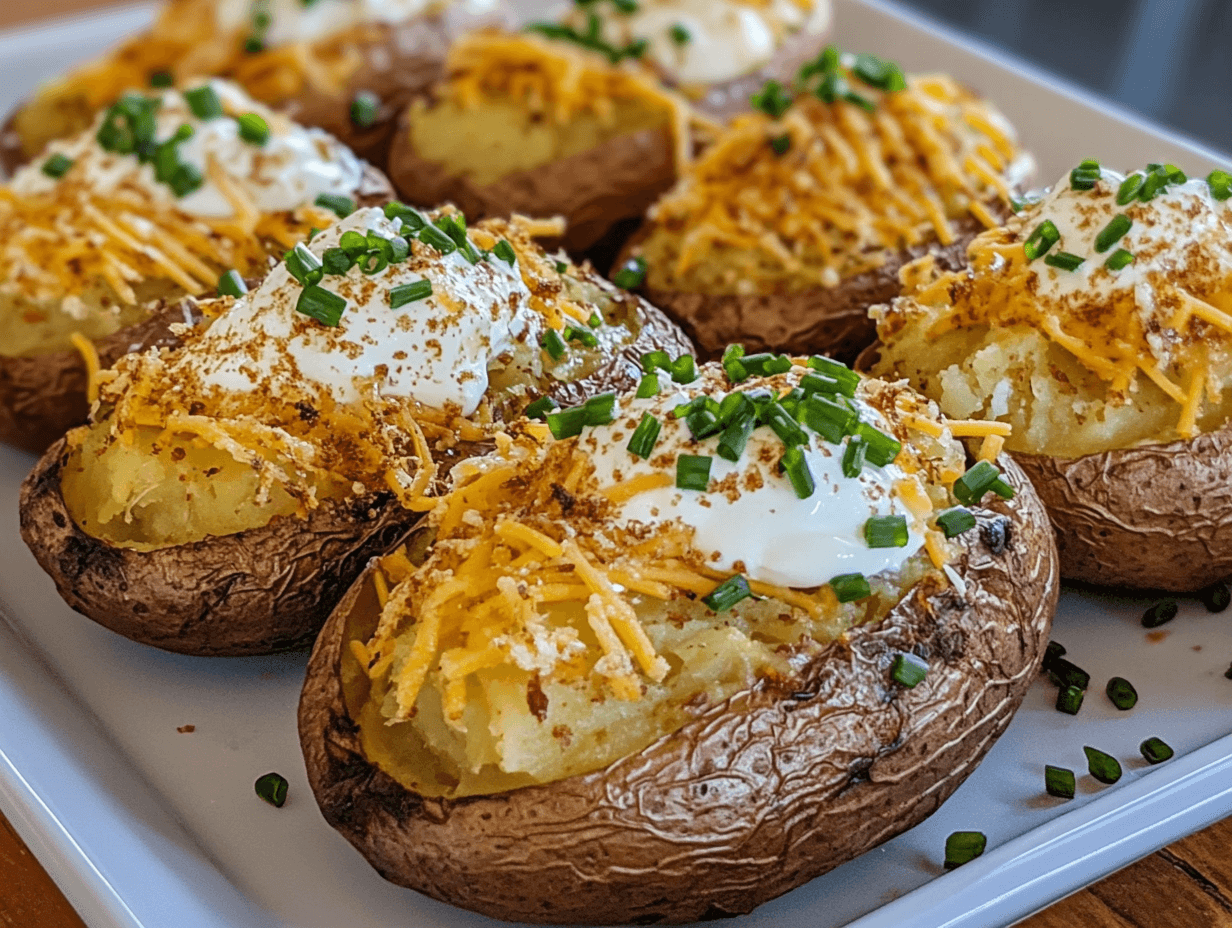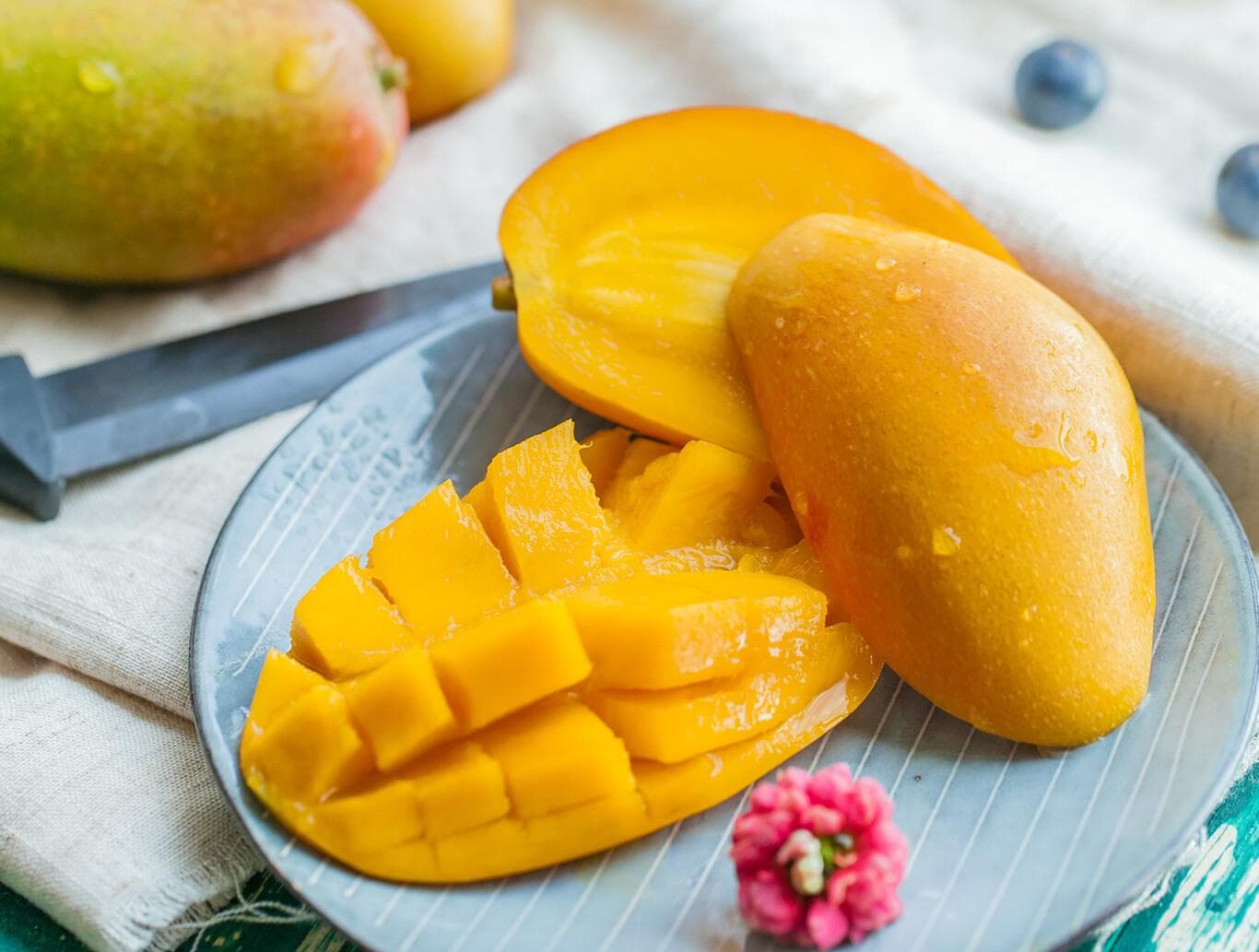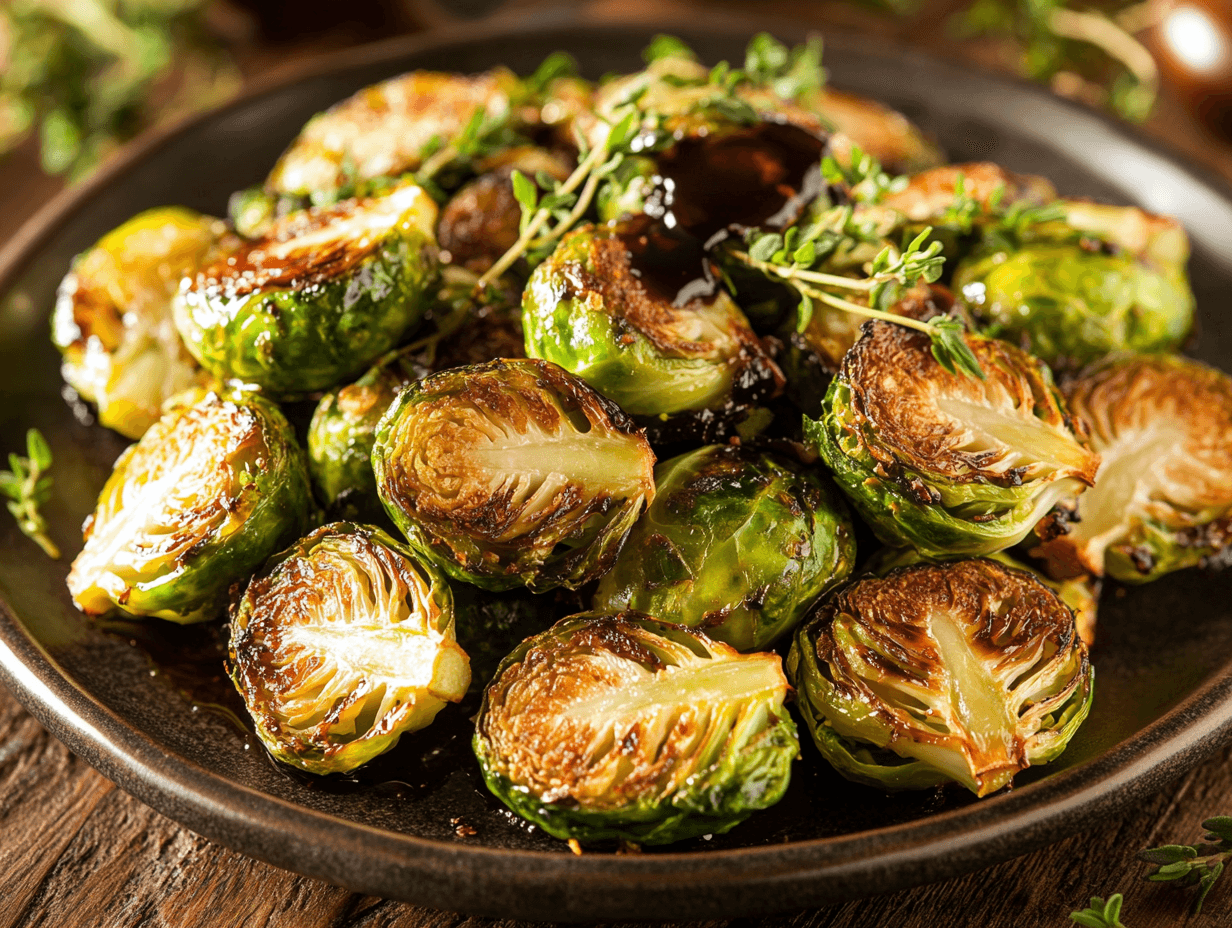What Is Your Favorite Way to Cook Asparagus?
Choosing just one method to cook asparagus can be difficult, as this vegetable transforms completely depending on the preparation. Roasting them in the oven allows the tips to become crispy and golden, enhancing their natural flavor. Blanching them in boiling water leaves them with a vibrant green color and a fresh, tender texture, ideal for salads or as a side dish. Grilling asparagus, on the other hand, imparts juiciness combined with an irresistible smoky touch. Additionally, quickly sautéing them in a pan preserves their freshness while achieving crispy tips and a tender interior.
Each cooking method offers a different experience, making asparagus a versatile option in the kitchen. From a simple sauté to a more elaborate roast, the choice of method will depend on the result you want to achieve on each occasion, whether it's a quick and light dish or a more complex preparation.

Tips and Tricks for Preparing Asparagus
Preparing asparagus may seem simple, but with some tips and tricks, you can ensure they always turn out perfect. It's important to pay attention to details from selection to cooking to maximize their flavor and texture.
- Select Fresh Asparagus: Look for firm stalks with a bright green color and tightly closed tips. Fresh asparagus usually has a clean aroma and a vibrant appearance, ensuring a better culinary experience.
- Wash Asparagus Thoroughly: Before cooking, it's essential to wash the asparagus to remove any traces of dirt or impurities. Pay special attention to the tips, as they are more likely to accumulate dirt. Soaking them in cold water for a few minutes also helps maintain their freshness.
- Use a Quick Blanching: To set their vibrant green color and ensure a tender yet firm texture, blanching asparagus in boiling water for 1-2 minutes is an excellent trick. Immediately after, immerse them in ice water to stop the cooking process. This not only preserves their texture but also makes them easier to cook later or use in salads.
- Avoid Overcooking: Asparagus cooks quickly, and overcooking can ruin their texture, making them soft and lackluster. Perfectly cooked asparagus should be tender but still have a slight bite, preserving their flavor and properties.

Types of Asparagus: Which Is the Best?
Asparagus comes in different varieties, each with unique characteristics that influence their flavor and texture. The three main types are green, white, and purple asparagus.
- Green Asparagus: The most common and popular type, known for its strong, slightly bitter flavor. Its vibrant green color is due to exposure to sunlight during growth, allowing it to develop chlorophyll. Green asparagus is versatile and can be used in a wide variety of recipes, from roasting to sautéing.
- White Asparagus: Grown completely underground to avoid exposure to sunlight, white asparagus has a milder and more delicate flavor than its green counterparts. Its texture is more tender, but it requires a bit more attention when cooking to avoid becoming fibrous. They are ideal for dishes where a more subtle flavor is desired.
- Purple Asparagus: This variety is less common and is distinguished by its deep purple color. Purple asparagus has a slightly sweeter flavor due to its higher sugar content. They are perfect for salads or dishes where you want to add a touch of color and a sweeter flavor. When cooked, they may lose some of their color, turning greener.
Of the three, green asparagus is generally the most recommended due to its versatility and ease of cooking. Its robust flavor and adaptability to various dishes make it an excellent choice for any kitchen.

How to Store Asparagus Before Cooking
Properly storing asparagus before cooking is essential to maintain its freshness and flavor. Here are some recommended methods to ensure your asparagus stays in top condition.
One of the best ways to store asparagus is to place them in a glass of water in the refrigerator, like a bouquet of flowers. Cut a small piece from the base of the stalks and place them in a glass with a couple of inches of water. Cover the asparagus with a plastic bag to retain moisture. Another option is to wrap them in a damp paper towel and then place them in a perforated plastic bag in the refrigerator. This helps maintain moisture without allowing excess water to accumulate, which could cause them to spoil.
It's important to avoid freezing asparagus directly without blanching, as this can affect their texture and flavor. If you need to freeze them, blanch them briefly in boiling water, cool them quickly in ice water, and then store them in an airtight bag in the freezer. By storing asparagus properly, you can keep them fresh for several days, ensuring they are ready to use whenever you need them.

Which Parts of the Asparagus Should Be Removed and Peeled?
When preparing asparagus, it's important to know which parts should be removed and which can be peeled to ensure a uniform and pleasant texture in the final dish. Asparagus has a woody base that can be tough and fibrous, so it's recommended to remove it before cooking.
To remove the woody part, take each asparagus by the ends and gently bend it until it naturally snaps. The lower part that breaks off is the one you should discard, as it tends to be too tough to eat. For thicker stalks, you can lightly peel the lower part with a vegetable peeler to ensure even cooking and a smooth texture.
These simple techniques will allow you to enjoy perfectly prepared asparagus, with a tender texture and delicious flavor.

What Is the Ideal Cooking Time for Perfect Asparagus?
The cooking time for asparagus is crucial to achieving the perfect texture, where they remain tender but with a slight firmness when bitten. The exact time varies depending on the cooking method you choose, but here is a general guide to perfectly cooked asparagus.
- Roasting in the Oven: Roasting asparagus in the oven at 400°F (200°C) for 10-15 minutes gives them a crispy exterior and tender interior. This method is ideal for those who enjoy a more concentrated, caramelized flavor.
- Blanching: Blanching asparagus involves briefly cooking them in salted boiling water for 2-3 minutes and then plunging them into ice water. This process sets their vibrant green color and gives them a fresh, crisp texture, perfect for salads or as a side dish.
- Grilling: Grilling asparagus quickly, usually between 5-7 minutes, depending on the thickness, gives them a smoky flavor and a slightly crispy texture, perfect for pairing with grilled meats and other vegetables.
- Sautéing: Sautéing asparagus in a hot pan with a bit of oil or butter for 3-5 minutes is a quick and effective option. This method preserves their freshness while achieving crispy tips and a tender interior.
Each of these methods offers a unique experience, but the goal is always the same: to achieve asparagus that is tender, full of flavor, and with just the right amount of firmness.

Different Methods to Cook Asparagus
Asparagus is incredibly versatile and can be prepared in various ways, each highlighting different aspects of its flavor and texture. Here are some of the most popular methods:
Roasting
Ingredients (Serves 2)
- 250 g (about 1/2 lb) asparagus – main ingredient, tender and flavorful when roasted.
- 1 tablespoon olive oil – helps crisp the tips and gives a rich finish.
- 1/2 teaspoon salt – enhances the natural asparagus flavor.
- 1/4 teaspoon black pepper – adds a mild spicy note.
- 1/4 teaspoon garlic powder (Optional) – adds depth of flavor.
- 1 teaspoon lemon zest (Optional) – for freshness and brightness.
- 2 tablespoons grated Parmesan cheese (Optional) – adds a savory, cheesy touch.
Step-by-Step Instructions
1. Preheat the Oven
Preheat your oven to 400°F (200°C) before preparing the asparagus.
2. Prepare the Asparagus
Take 250 g of asparagus, rinse well under cold water, and pat dry with a paper towel. Trim the woody ends for tender stalks. Place the cleaned asparagus on a baking sheet.
3. Season the Asparagus
Drizzle the asparagus with 1 tablespoon of olive oil. Sprinkle with 1/2 teaspoon salt and 1/4 teaspoon black pepper. Turn the spears gently with your hands to coat evenly. For extra flavor, add garlic powder, lemon zest, or grated Parmesan at this stage if desired.
4. Roast
Arrange the seasoned asparagus in a single layer on the tray to ensure even roasting. Place in the preheated oven and roast for 12–15 minutes (thin stalks may take just 10 minutes). Roast until the tips are crispy and golden while the stalks remain slightly firm.
5. Serve
Remove from the oven and serve immediately as a side dish. For a caramelized finish, roast 2–3 minutes longer, but avoid overcooking to prevent sogginess.

Blanching
Ingredients (Serves 2)
- 200 g (about 7 oz) asparagus – fresh and trimmed.
- 1 tablespoon salt – for seasoning the boiling water.
- 1 large pot of water – enough to fully submerge the asparagus.
- 1 large bowl of ice water – to stop the cooking process.
Step-by-Step Instructions
Blanching is a quick and effective method for preparing asparagus, especially if you plan to use them in salads or as a cold side dish.
1. Prepare the water
Fill a large pot with enough water to submerge the asparagus completely. Add 1 tablespoon of salt and bring it to a boil over high heat.
2. Prepare the ice bath
While waiting for the water to boil, ready a large bowl and fill it with ice water. This will quickly stop the cooking process later.
3. Cook the asparagus
Place 200 g (about 7 oz) fresh asparagus into the boiling water. Let them cook for 2–3 minutes, adjusting for the thickness of the stalks. The goal is to keep their vibrant green color and crisp texture.
4. Shock in ice water
Using a slotted spoon, remove the asparagus promptly and transfer them to the bowl with ice water. Let them sit for another 2–3 minutes to halt cooking and preserve freshness.
5. Serve or store
Drain the asparagus well. Serve immediately as part of a salad, on their own as a side dish, or keep refrigerated for later use.

Grilling
Ingredients (Serves 2)
- 200 g (about 7 oz) fresh asparagus – Washed and trimmed, they are the star of the dish.
- 1 tablespoon olive oil – Adds flavor and prevents sticking.
- 1/2 teaspoon salt – Brings out the natural taste of the asparagus.
- 1/4 teaspoon black pepper – Provides a mild kick and depth.
- 1 teaspoon lemon juice (optional) – Enhances freshness and adds a tangy touch.
Step-by-Step Instructions
1. Preheat the Grill
Heat the grill to medium-high heat. A hot grill is essential for achieving nice char marks and smoky flavor.
2. Prepare the Asparagus
Rinse 200 g asparagus, trim the tough ends, and pat them dry. Place them in a bowl and drizzle with 1 tablespoon olive oil. Toss well to coat evenly.
3. Season
Sprinkle 1/2 teaspoon salt, 1/4 teaspoon black pepper, and if desired, 1 teaspoon lemon juice. Mix gently so all stalks are seasoned.
4. Grill the Asparagus
Place the asparagus directly on the grill grates in a single layer. Cook for 4–6 minutes, turning occasionally until the tips are slightly crispy and the stalks tender but firm.
5. Serve
Remove from the grill and serve immediately as a side dish for meat, fish, or on their own as a light appetizer.

Sautéing
Ingredients
- 250 g (about 1/2 lb) asparagus – fresh, rinsed and trimmed.
- 1 tablespoon olive oil or butter – for sautéing.
- 1 clove garlic, finely chopped (optional) – adds a savory depth of flavor.
- 1 small shallot, finely chopped (optional) – for a mild sweet onion taste.
- 1 teaspoon lemon juice (optional) – gives freshness and brightness.
- Salt – 1/4 teaspoon – enhances the natural flavor.
- Black pepper – 1/4 teaspoon – adds a mild kick.
Step-by-Step Instructions
1. Prepare the Asparagus
Rinse 250 g of asparagus under cold water and pat them dry with a kitchen towel. Trim off the tough ends and, if you prefer, cut the stalks into bite-sized pieces for easier serving.
2. Heat the Pan
Place a large pan over medium-high heat. Add 1 tablespoon of olive oil or butter and let it melt or heat until shimmering. This step ensures a perfect balance between browning and cooking through.
3. Add the Asparagus
Put the asparagus into the hot pan in a single layer. Sauté for 5–7 minutes, stirring occasionally to ensure even cooking. The stalks should become slightly tender while the tips turn crispy.
4. Season and Enhance the Flavor
Sprinkle 1/4 teaspoon salt and 1/4 teaspoon black pepper over the asparagus while cooking. If desired, add 1 clove of chopped garlic and/or 1 small shallot for extra flavor. A splash of 1 teaspoon lemon juice at the end adds freshness.
5. Serve
Remove the asparagus from the heat and serve immediately. The inside should remain slightly firm while the outside develops a beautiful color and flavor. Perfect as a side dish for chicken, fish, or steak.

Types of Seasoning for Asparagus: How to Enhance Their Flavor
Asparagus has a natural flavor that lends itself to various seasoning combinations, allowing you to experiment and find the perfect mix that enhances their taste. Here are some types of seasoning you can use to take your asparagus to the next level:
- Classic Salt and Pepper: The most basic and effective combination. Sprinkling salt and freshly ground pepper over the asparagus enhances their natural flavor without overwhelming it. This is the perfect starting point, especially if you prefer a minimalist approach in the kitchen.
- Garlic and Lemon: Adding chopped garlic and a splash of fresh lemon juice is a simple way to infuse freshness and a touch of acidity to the asparagus. You can use fresh or powdered garlic, and the lemon adds a bright note that complements the earthy flavor of the vegetable.
- Parmesan and Butter: For a richer, more decadent flavor, try sprinkling grated Parmesan cheese and melting some butter over the freshly cooked asparagus. The combination of butter and Parmesan creates a creamy texture and umami flavor that's hard to resist.
- Fresh Herbs: Using fresh herbs like thyme, rosemary, or basil can give an aromatic touch to the asparagus. These herbs add depth of flavor without overshadowing the vegetable's natural taste. You can add them during cooking or just before serving.
- Spicy Spices: If you enjoy spice, try sprinkling a bit of paprika, red pepper flakes, or cayenne pepper over the asparagus. These spices add a pleasant heat that contrasts well with the asparagus' freshness, offering a more intense flavor experience.
These types of seasoning will allow you to experiment and find the combination you like best, making asparagus a standout dish in your kitchen.

Nutritional Benefits of Asparagus
Asparagus is an excellent source of essential nutrients that offer multiple health benefits. They are rich in vitamins A, C, E, and K, as well as folate, making them an ideal food for strengthening the immune system, improving skin health, and promoting blood clotting. Additionally, they contain minerals such as iron, calcium, and potassium, which are crucial for maintaining good bone and cardiovascular health. With only about 20 calories per serving, asparagus is low in calories and high in fiber, which helps improve digestion and regulate blood sugar levels.
Asparagus also stands out for its content of antioxidants like vitamin E, vitamin C, and glutathione, which protect cells from oxidative damage and reduce the risk of chronic diseases. Additionally, thanks to the prebiotic fiber called inulin, asparagus promotes healthy digestion by stimulating the growth of beneficial bacteria in the gut, thus strengthening the immune system. Incorporating asparagus into your diet not only adds flavor to your dishes but also significantly contributes to your overall well-being.

What Can We Pair Asparagus With?
Asparagus is a versatile side dish that can be paired with a wide variety of main courses. Their distinctive flavor and tender texture make them an ideal accompaniment to meats, fish, and vegetarian options. Here are some ideas of what to pair asparagus with to create a balanced and delicious meal.
- Grilled or Roasted Meats: Asparagus pairs perfectly with meats such as steak, roasted chicken, or grilled pork. Their slightly bitter flavor and crispy texture contrast well with the richness of the meats, creating a balanced dish. Additionally, you can roast the asparagus along with the meats to infuse them with a smoky flavor.
- Fish and Seafood: The fresh flavor of asparagus complements fish and seafood well. You can serve them alongside grilled salmon, sautéed shrimp, or baked cod. A drizzle of lemon over the asparagus and fish enhances the flavors and adds a touch of freshness.
- Egg Dishes: Asparagus is an excellent side for egg-based dishes like omelets, poached eggs, or quiches. The combination of asparagus and eggs is classic in French cuisine, where the soft, creamy textures are highlighted by the freshness of the asparagus.
- Pasta and Risottos: Adding asparagus to pasta or risottos is a simple way to incorporate vegetables into these dishes. Their texture and flavor blend well with creamy or tomato-based sauces, adding a touch of freshness that balances the richness of the main dish.
Asparagus is so versatile that you can experiment with different combinations and discover your favorite. Whether as a side dish or integrated into a main course, asparagus adds flavor, color, and nutrients to any meal.

Frequently Asked Questions
Q: What is the best way to cook asparagus?
A: There isn’t just one “best” way—it depends on the texture and flavor you want. Roasting gives crispy tips and deep flavor, blanching keeps them fresh and green, grilling adds smokiness, and sautéing maintains tenderness with a slight bite.
Q: How can I keep asparagus fresh before cooking?
A: Store asparagus like a bouquet of flowers in the fridge, with the stalks standing in a glass of water covered loosely with a plastic bag. Alternatively, wrap them in a damp paper towel and place them in a perforated bag to keep them moist and crisp.
Q: Which parts of the asparagus should I remove?
A: The woody bottoms should always be discarded, as they are too tough to eat. Simply bend the stalk and let it snap naturally where tender meets tough. For thicker spears, peeling the lower stalk helps ensure an even, tender texture.
Q: What foods pair best with asparagus?
A: Asparagus pairs wonderfully with roasted meats, fish, and seafood, as well as pasta or risotto. It also complements egg dishes like omelets or quiches. A squeeze of lemon or a sprinkle of Parmesan can make it shine even more.
